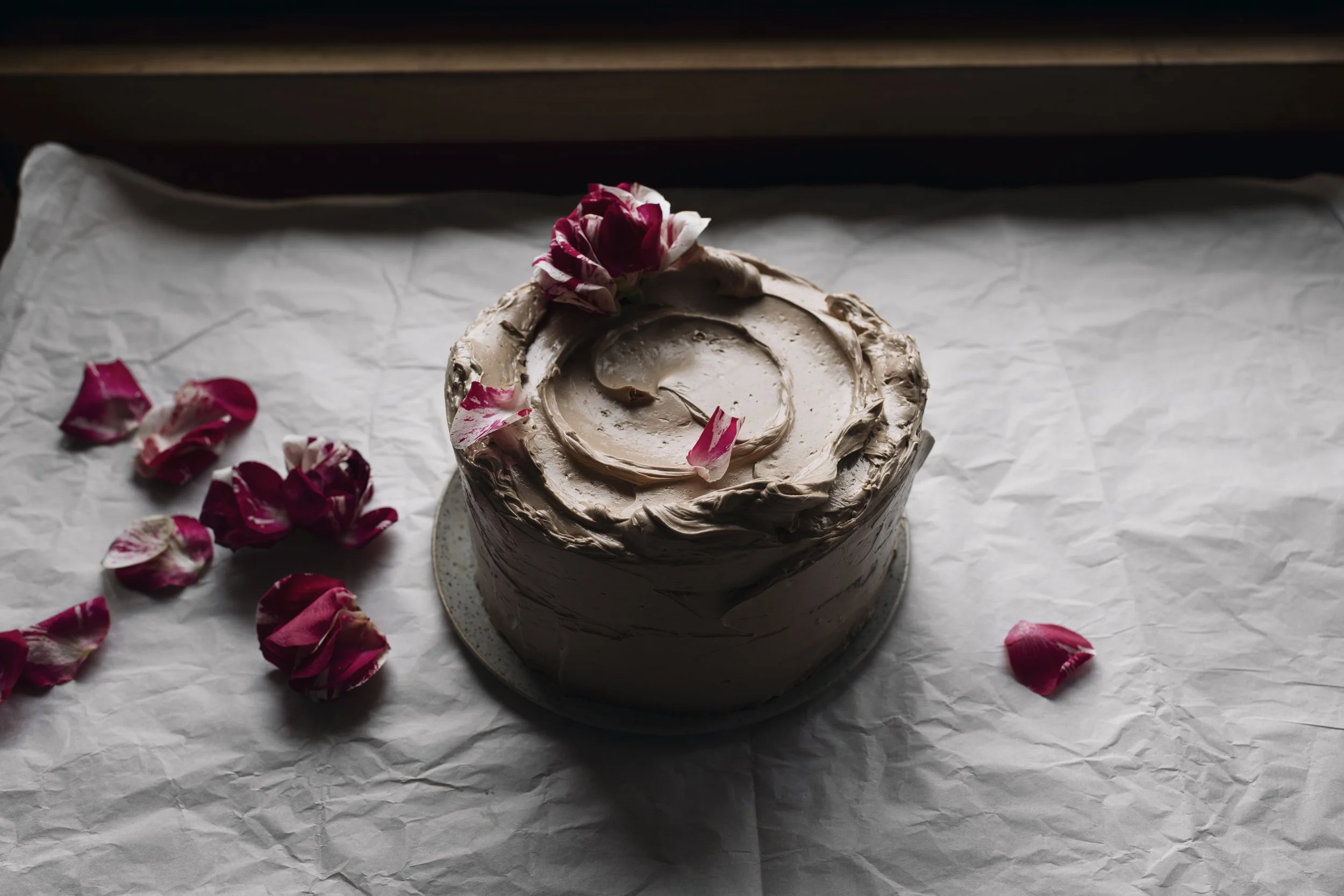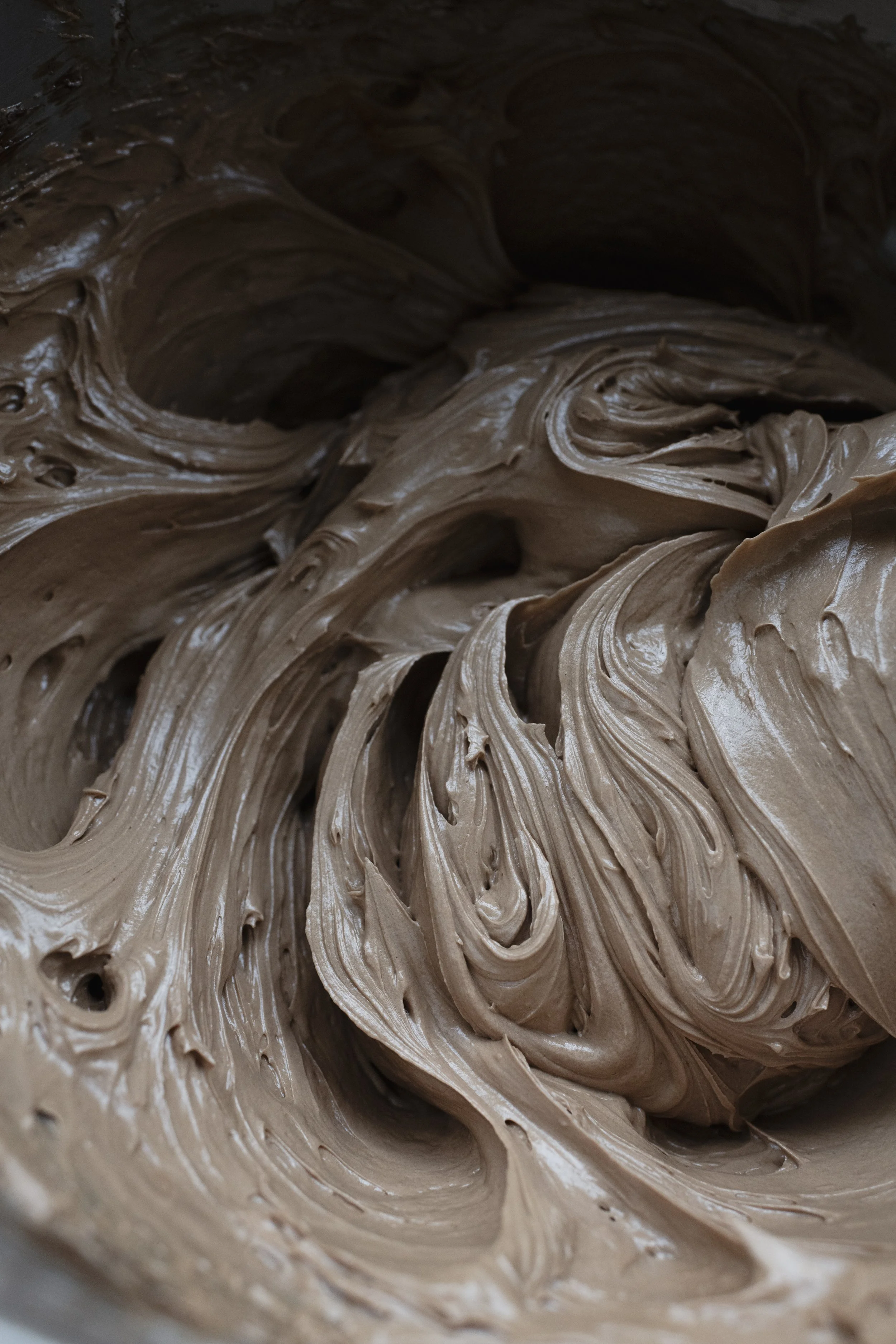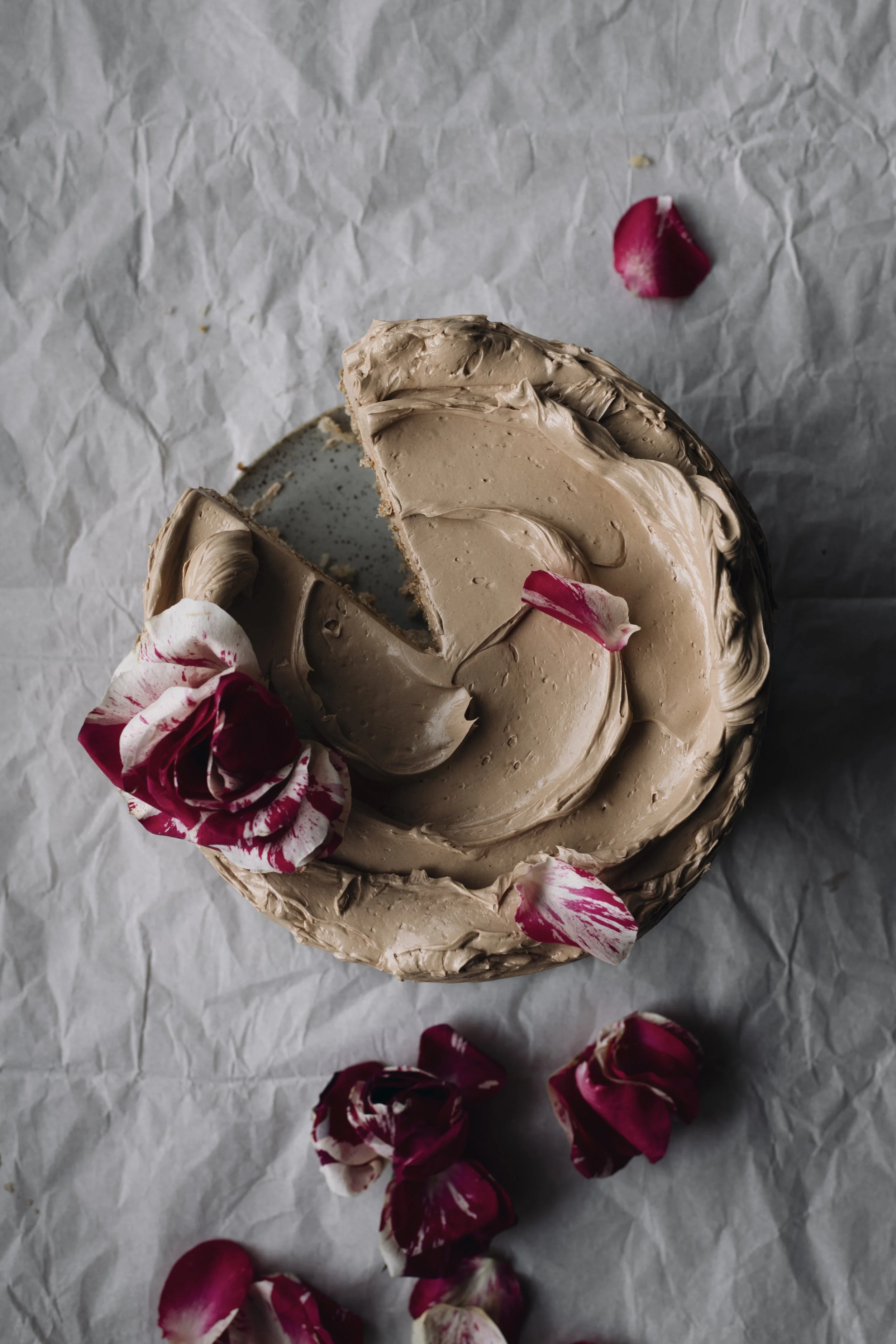I doubt that I ever loved you.
I believe I have chosen peace.
Think of this as the dormant phase
of a disease.
—Margaret Atwood, “Hidden” from Interlunar
This old thing, lying around—I’ve held it since Wild Sweetness. My wealth of unpublishable hidden work, and only some of it recipes, pages scattered, littered, and strewn—like sleeping beauties. But preservation, when pure, has its promising parts.
The cake itself is nothing but hazelnut. There have been some changes to it—time, as well as a change of heart, will do that—but mostly it’s true to original form. Rich, indulgent, and silky, the important role of Gianduja—a compound of chocolate mixed with hazelnut paste—was not lost in translation. It’s an easy ingredient to source, but if this cake is a whim thing, a good, devourable, eating-kind of milk chocolate can be used as a replacement.
For the cake
2 ¼ cups + 1 teaspoon (285 g) all-purpose flour (sifted), 1 cup + 2 teaspoons (100 g) ground hazelnuts, 2 ¼ teaspoons baking powder, ¼ teaspoon ground nutmeg, ½ teaspoon salt, 1 1/3 cups + 1 teaspoon (275 g) granulated sugar, ¾ cup + 1 tablespoon (1 ½ sticks + 1 tablespoon; 185 g) unsalted butter (very soft at room temperature), 5 large egg whites, 1 ¼ cups (300 ml) whole milk, 1 tablespoon vanilla extract
Adjust racks to the top, middle and bottom thirds of the oven, then pre-heat it to 350ºF (180ºC). Grease and line three 7-inch (18-cm) cake pans with non-stick parchment paper.
In the bowl of a stand mixer that’s fitted with the paddle attachment, combine the flour, hazelnuts, baking powder, nutmeg, and salt. Stir through the sugar. Set the speed to medium, then beat in the butter, a tablespoon at a time, until it’s all used up. Continue to beat to form a sandy meal-like texture, about 3 to 5 minutes. Meanwhile, lightly stir together the egg whites, milk, and vanilla in a measuring cup. Slowly stream the liquids into the dry ingredients, beating, until well combined. Raise the speed to medium-high and continue to beat for a few more minutes until light and aerated. Divide the batter between the prepared pans, smoothing it out with an offset palette knife.
Bake for 30 to 35 minutes, rotating halfway through, until golden. A skewer inserted into the middles should come out clean. Leave to cool in the pans for 10 minutes, then carefully invert the cakes out and onto a wire rack to cool completely. Use a sharp serrated knife to level off any domed tops, before glazing with syrup.
For the syrup
½ cup (100 g) granulated sugar, a thick strip of orange peel, 2 tablespoons hazelnut liqueur (or orange juice as a non-alc. substitute)
Put the sugar, ¼ cup + 2 tablespoons (90 ml) of water, and peel into a small saucepan. Bring to the boil over medium heat, swirling often to help dissolve the granules. Remove, and stir though the liqueur or juice. Cool, then brush it all over the cakes and let it seep, before frosting.
For the buttercream
½ cup (85 g) Gianduja or milk chocolate (finely chopped), ¾ cup (150 g) granulated sugar, 6 large egg yolks, 1 ¼ cups + 2 tablespoons (2 ½ sticks + 2 tablespoons; 315 g) unsalted butter (very soft at room temperature), 1 teaspoon vanilla extract, pinch of salt
To frost the cake, put the Gianduja or milk chocolate into a medium heatproof bowl that’s suspended over a saucepan filled with a few inches of barely simmering water. Do not let the base of the bowl touch the water below. Heat over medium-low, stirring occasionally, until melted. Set aside.
Next, put the sugar and ¼ cup (60 ml) of water into a medium saucepan. Bring to a rapid boil over medium-high heat, until it reaches 250ºF (121ºC) on a candy thermometer. Meanwhile, put the yolks into the bowl of a stand mixer that’s fitted with the whisk attachment, and start whisking them on medium speed. As soon as the syrup has reached temperature, steadily stream it into the yolks. Continue to whisk until thick and glossy, about 5 minutes. The bowl should no longer be hot to the touch. Switch out the whisk for the paddle attachment. Beat in the butter, a generous tablespoon at a time, followed by the cooled chocolate, vanilla, and salt, to taste. Continue to beat until the buttercream is silky-smooth, like velvet.
When you’re ready to assemble, put the first cake layer onto a serving plate, cut side facing up. Spread over a few tablespoons of buttercream, using an offset palette knife to smooth it out to the edges. Lightly press on the next layer, frosting in the same manner as above. Finish with the final layer, cut side facing down. Coat thickly in the remaining buttercream, then decorate the cake as desired. Transfer it to the refrigerator, and leave to firm up slightly, before slicing and serving.
This cake is best eaten on the day of making, but will keep loosely covered in the refrigerator for up to 3 days.



